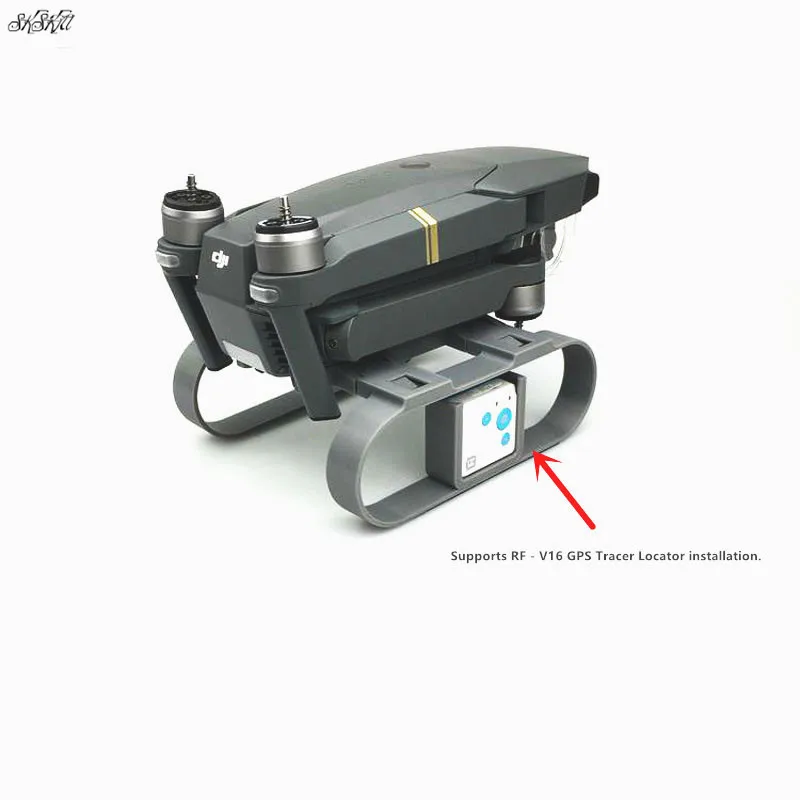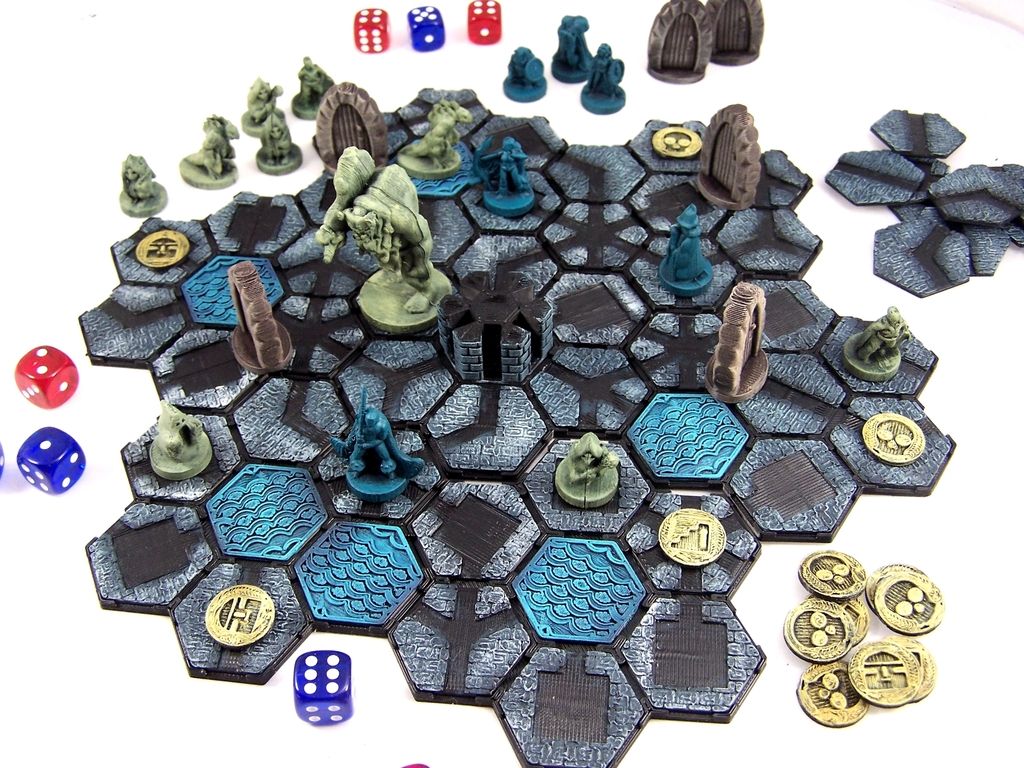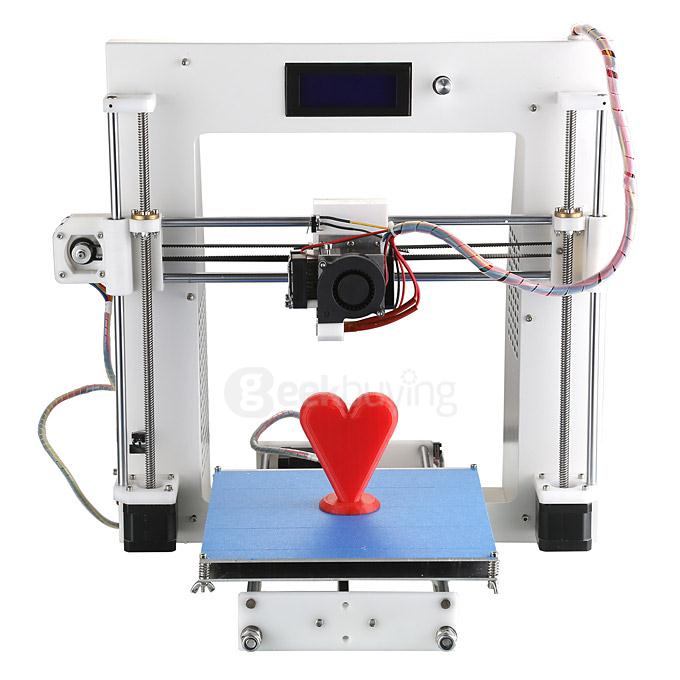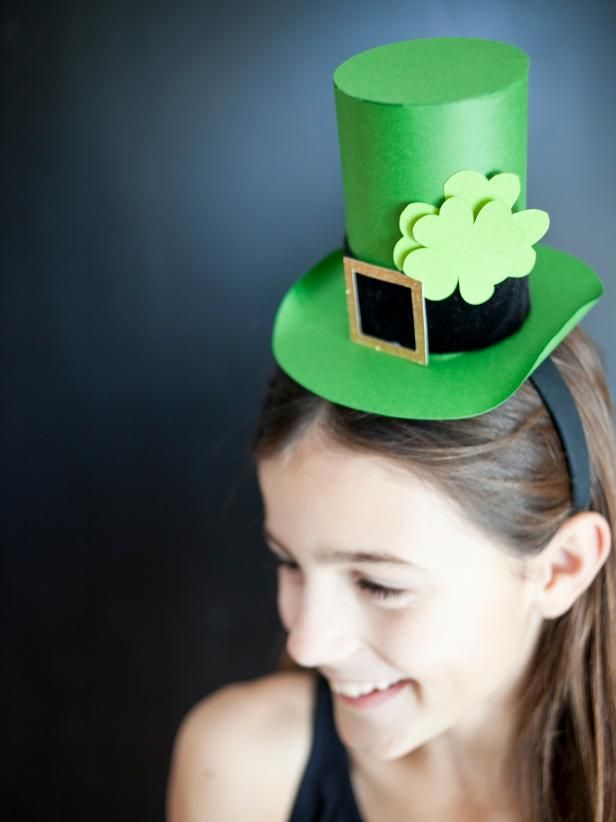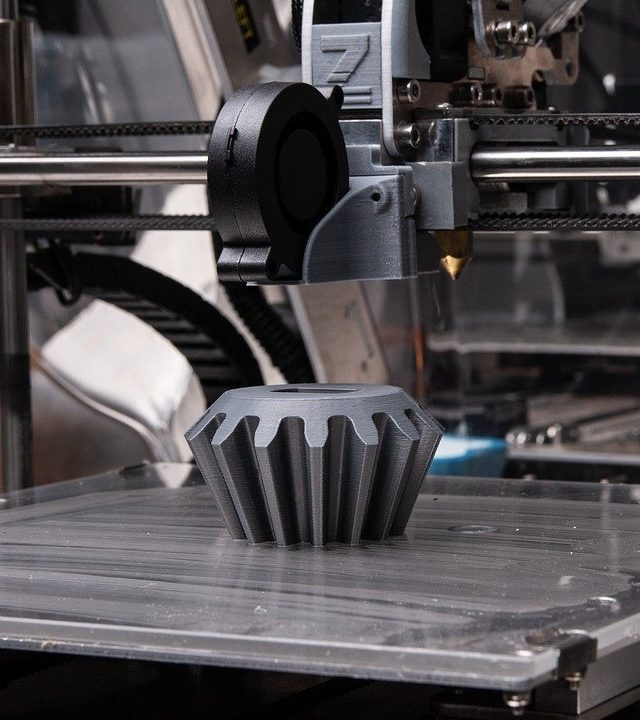3D printer math
9 Ways Teachers Can Use a 3D Printer to Teach Math and Science
We completely understand: 3D printing can sound intimidating. But it can open so many doors for students, especially in math and science.
Fear not, brave teacher. We’ve got just what you need to move your 3D-printing goals forward—whether your 3D printer has a cozy little spot in your supply closet, silently collecting dust, or you and your students have jumped feet-first into 3D-printing projects.
Get moving and shaking with these project ideas:
1. Design custom artwork frames.
This project is perfect for elementary students. They’ll practice their geometry skills as well as calculate measurements, weights and balance as they design a modular frame for a specific piece of art. As an extension, challenge students to create decorations that can snap on and off of the frame for a fully customized display.
Credit: Dremel Dreams, created by O’Donnell Learn
2. Go cross-curricular.
Here’s a fun idea! Brock Perkins, a fifth grade teacher at Winchester Thurston School in Pennsylvania, teaches an extensive cross-curricular unit on the Middle Ages. Students learn about the lives of the peasants and the nobility, castle structure and design, and they study siege machines like catapults and battering rams.
He and the school’s instructional technology specialist, Katie Weber, introduced the 3D-printing element of the project by printing out several different designs of catapults (found on www.thingiverse.com) and predicting and then testing the ability of these machines to launch projectiles. They then pair students up to brainstorm a design of their own to print on their 3D printer.
“Their task is to create an ‘anti-siege’ machine to protect their castles from invaders. They sketch their ideas and then work in the online CAD program Tinkercad to design their machines,” says Weber. “Luckily, our middle school students have extensive experience in Tinkercad, so they can help our fifth grade students with their creations.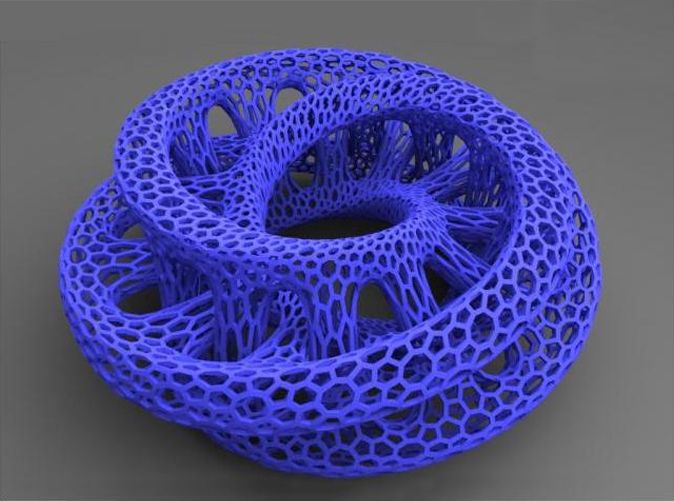 ” After much trial and error (including resizing and flipping designs), the final products often look amazingly like the original brainstorming sketches.
” After much trial and error (including resizing and flipping designs), the final products often look amazingly like the original brainstorming sketches.
Credit: Katie Weber at Winchester Thurston School
3. Give an open-ended challenge.
What if kids could create something that helped solve a real-world problem? A 10-year-old in Texas used a 3D printer to create a prototype for his idea that could prevent deaths when children or pets are accidentally left in vehicles on hot days. His design is in progress and may even get a patent. Show this clip to your students to inspire them to design their own solutions to real-world problems.
4. Print physical maps.
Teacher Chrissie Mahl helped her students use 3D printers at her school to create physical maps of Virginia to show the five regions of the state. Their models illustrate the coastal plains, piedmont, the Blue Ridge Mountains in the western part of the state, the valley and ridge, and the Appalachian plateau.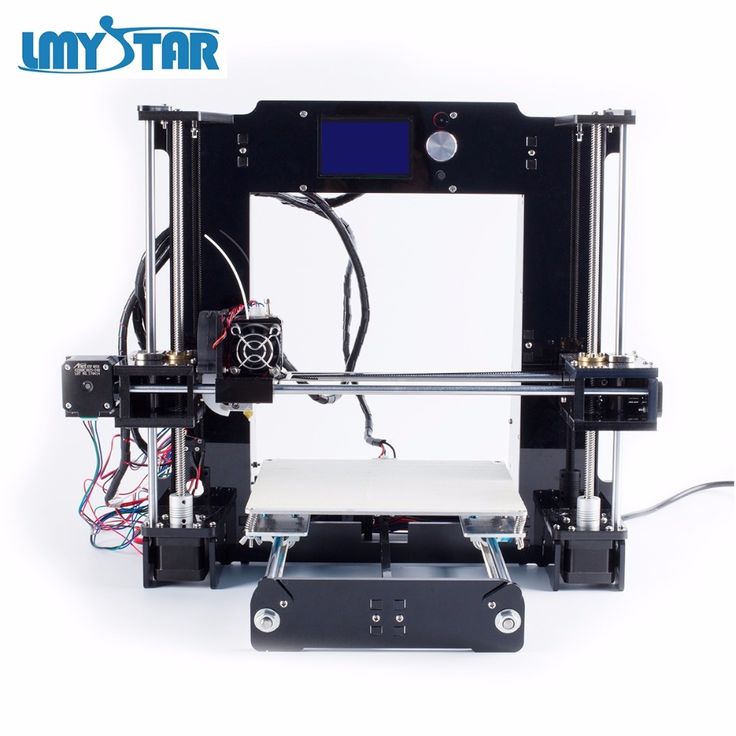 A great way to bring geography into the classroom!
A great way to bring geography into the classroom!
Credit: Christine Mahl at Pembroke Meadows Elementary; Virginal Historical Society
5. Explore geometry with 3D models.
The idea of creating 3D models with your students may seem like an unachievable goal. But one third grade class at Highcastle Public School in Toronto, Ontario, did just that. Here, they break down the steps in a math lesson that resulted in the students designing and printing their own 3-dimensional castles—for real!
6. Design and print bugs.
Clark Barnett, a teacher and education technology consultant for the Conejo Valley Unified School District in Thousand Oaks, California, found that inviting students to design and print their own bugs was a terrific way to engage them in ecosystems, entomology and engineering all at the same time.
“Even though we were studying insects, there is a lot of engineering involved. For example, the legs have to be designed to support the weight of the bug’s body. 3D printing makes it easy to bring in engineering techniques and see how things work,” Barnett said. You can learn more about the process here.
3D printing makes it easy to bring in engineering techniques and see how things work,” Barnett said. You can learn more about the process here.
Credit: Clark Barnett at Conejo Valley Unified School District
7. Teach fractions and area.
Teacher Jason Padilla from PS 39 The Francis J. Murphy Jr. School truly believes in using 3D printing to bring learning to life. His students use a 3D printer to create math manipulatives to help study fractions and explore the concept of area.
“They can see that shapes have specific area and take up space,” Padilla said. “Printing out the shapes they create, students have to ensure that their prints are not too big for the printer to make.”
His students have also printed out cubes to use to create area models of various sizes, and downloaded a Fraction Pie that helps them visualize parts of a fraction as it relates to a whole, determine which fractional unit is larger, and how fractions and decimals are related.
Credit: Easy as Pie Fractions by ThreeDeePrint.
8. Print equations.
In his role as a K–12 technology facilitator for the Union City, New Jersey, Board of Education, Marcos Navas enjoys finding new ways to engage students. Using 3D printers, he helps high school algebra students print 3D representations of equations so they can visualize and conceptualize math problems with 3-dimentional objects.
“3D printing is a motivational tool for students,” Navas says. “When they can actually bring something they’ve worked on to life and hold it, it gives them a reason to keep learning.”
Learn more about this 3D equation project here.
Credit: Dremel Dreams, created by Marcos Navas
9. Find volume.
Instructional technologist Kelly Hong from the Hutto, Texas, Independent School District helped fifth graders learn how to find the volume of irregular 3D figures in math using a 3D printer. First, the students used Tinkercad to build irregular figures. They then printed them and calculated the volume. A great idea for fostering both math and creativity!
A great idea for fostering both math and creativity!
“I’m always amazed at how quickly students learn to use technology tools,” says Hong. “Allowing students to use technology to solve problems, do research and present ideas gives them a better real-world understanding of the skills they’re developing, and it keeps them super-engaged.”
Credit: Kelly Hong from the Hutto, Texas, Independent School District
3D Printed Math | MATH FAN
Read. Watch. Play. Explore. Create
3D PRINTED MATH
If you have access to a 3D Printer, try printing toys, gadgets, puzzles, and math manipulatives.
Creativity is a major part of growing up, and 3D printed toys can let kids express that. Everyone can design 3D models to print or visit websites like Thingiverse to find free models to customize or print directly. You can support the designer by clicking the tip the designer button.
Do not worry that if you cannot 3D print, you can still purchase the one-of-a-kind 3D models.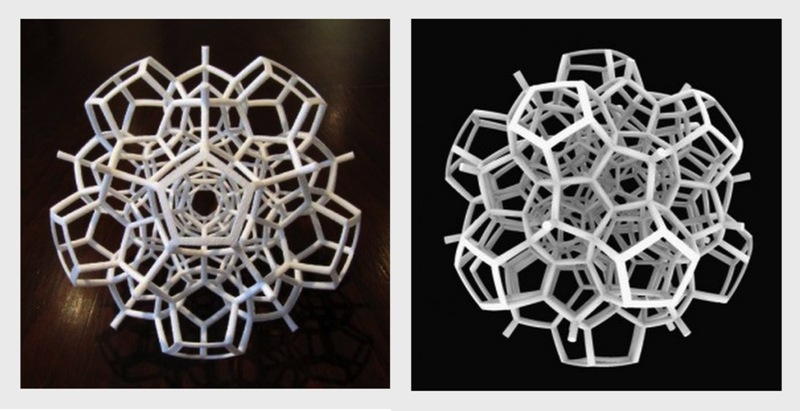
Fractals
by henryseg
Hilbert
Curve
One of the models mentioned in the Visualizing Mathematics with 3D Printing Book. You can use it to display iterations of HC
View More
Topology
by henryseg
Topology Joke
One of the models mentioned in the Visualizing Mathematics with 3D Printing Book by Henry Segerman
View More
Pyramids & Cone
by mrbenbritton
Height vs Slant Height
A set of pyramids and a cone which have had slices taken out to help students identify the hidden triangles.
View More
by mathgrrl
Knots
3D printed conformations of the fifteen knots through seven crossings
View More
Scutoids
by mathgrrl
Pair of Packable Scutoids
Scutoids are a geometrical solution to 3D packing of epithelia in the journal Nature.
View More
by IronOxide
Conic Sections
A horizontal slice reveals the circle, a slanted reveals the ellipse, a vertical reveals the hyperbola, and a slanted vertical cut reveals the parabola.
View More
Pythagorean Thm
by Freakazoid
Proof of the Theorem
Use the given regions to cover the squares to prove Pythagoras Theorem
View More
Illusion
by KazukiYamamichi
Straight vs
Curve
Straight bar goes through curved slit
View More
Klein Bottle
by MadOverlord
Klein Bottle
This special 3D shape with only one surface.
View More
Reuleaux Shapes
by roklobster04
Solids of Constant Width
These shapes have the same width (height) no matter how they are rotated or rolled.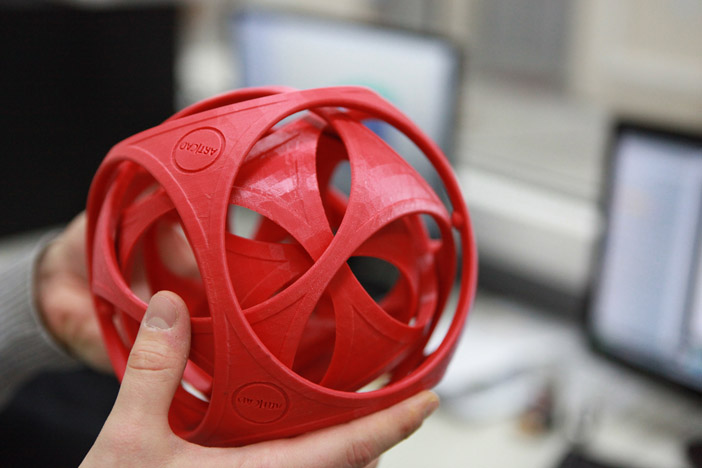
View More
Puzzle
by Juanill0
Puzzle
365
Famous Puzzle 365 - use petrominoes to cover all the numbers except today's
date.
View More
Fidgets
by JustinSDK
Curves of Pursuits
3D Models of fidgets which can also be used to display the curves of pursuit.
View More
Sierpinki Pyramid
by ricktu
3D Fractal
Watch the horizontal cross-sections when forming the pyramid.
View More
Pentagons
by mathgrrl
All Tessellating Pentagons
15 types of non- regular tessellating pentagons
View More
Platonic Solids
by XYZAidan
Foldable
Polyhedra
oldable versions of your favorite regular 3D shapes, the five Platonic Solids!
View More
Menger Slices
by mathgrrl
Slices of Menger Cube
Three different diagonal slice models of a level 2 Menger sponge.
View More
Two Circle Roller
by AJsRaceway
Oloid-like shape
When it rolls, every point on its surface touches the ground
View More
Hinged Square
by jonco223
Square & Triangle Transformation
inged triangle-square dissection (Dudeney's dissection)
View More
Mobius Strip
by dennedesigns
Mobius Strip
5 half-twists
2 sided but one surface
special shape
View More
Impossible Triangle
by Tomonori
3D Optical
Illusion
A triangle with three 90 degrees angle
View More
Inclinometer
by ChrisX35
Hypsometer
Usually called inclinometer. It is used to find the height of the objects using trigonometry.
View More
Pyramids & Cube
by ereiser
Volume Formula
Can be used to prove the volume ratio between a cube and a square pyramid. 3
3
by eashwarps
Binomial
Expansion
A model for the binomial expansion of the cube of the sum of a and b.
View More
Illusion
by dietervdf
Perspective
3D object w/ the top view is a circle, the front view is a triangle and the side view is a square.
View More
by althepal
Slope Puzzle
64=65
Rearrange the pieces, and the area seems to change. How can that happen?
View More
Squarcle
by PhilKloppers
3D Optical
Illusion
he Squarcle is a 3D optical illusion based on the work of Kokichi Sugihara
View More
Golden Ratio
by stephenplace
Golden Ratio
Spiral
A key ring of Fibonacci - Golden Ratio spiral
View More
Book Recommendation;
Visualizing Mathematics with 3D Printing
by Henry Segerman
The age-old dream of a brilliant mathematician is embodied by a 3D printer (3 photos + video)
The Chinese have learned how to install a SIM card tray in iPhone 14 without a SIM card
Chinese enthusiasts disassembled the iPhone 14, brought from the US, and found that instead of the SIM card tray, the new SIM-free iPhone 14 for the US has a plastic plug.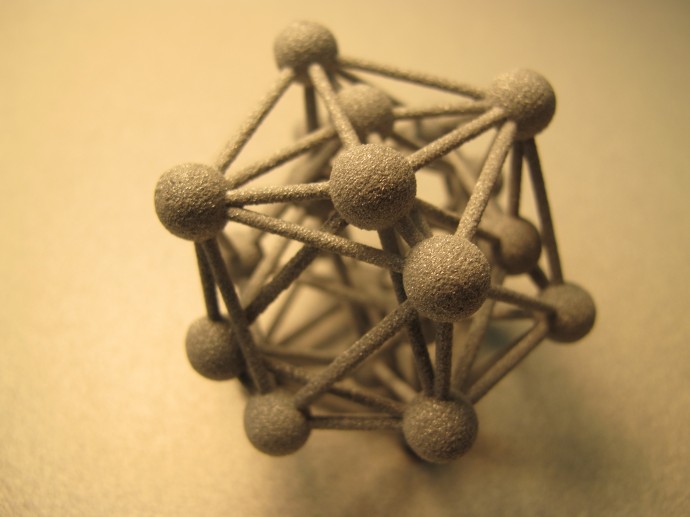 It was decided to conduct an experiment on the "implantation" of the SIM card slot.
It was decided to conduct an experiment on the "implantation" of the SIM card slot.
Bright photo portraits and stylish design: vivo introduces the V25 Series in Russia (3 photos)
Vivo announces the launch of the new V25 Series on the Russian market, introducing the new V25 Pro with a 120 Hz curved 3D screen, V25 and V25e with a 64 MP ultra-sensitive camera and hybrid stabilization. Stylish smartphones with FlashCharge fast charging, 8 GB virtual memory expansion and photochromic glass body are available in various colors...
Read moreiPhone and Android learned how to hack through the WhatsApp messenger
WhatsApp developers have admitted to finding a serious vulnerability in the application code. It turned out that in the latest versions of WhatsApp, hackers could hack the messenger by receiving a video call from the user, while watching the video also threatens to be hacked, because hackers began to “sew” viruses into the video.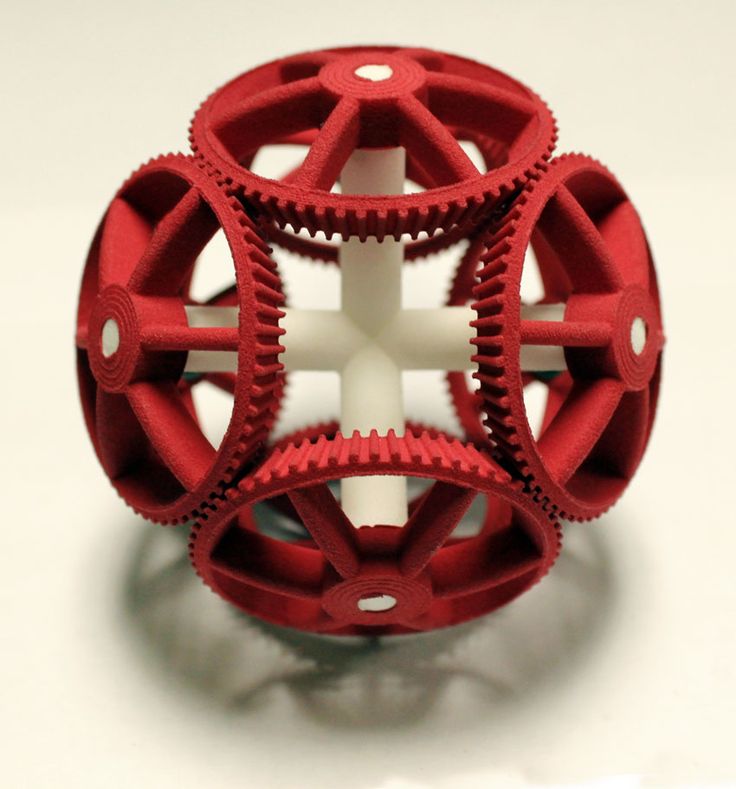
Hack Public Services and earn money
Many IT corporations have a special program in which everyone is invited to find a vulnerability in their products. Those who achieve this goal are paid a generous reward in return for a detailed description of the discovered problem.
Read moreStellarium virtual planetarium is finally available to everyone
For the first time in 20 years since the launch of the development of the virtual planetarium Stellarium, it was released for computers running Windows, macOS, Linux. In addition, the developers have released mobile versions of Stellarium, and a web version of the planetarium is also open.
Read moreVkontakte Odnoklassniki
These days, the fantasy we heard or read about as children is becoming a reality. Many ideas and developments were not implemented during the life of the authors - the technical capabilities were not enough in those years.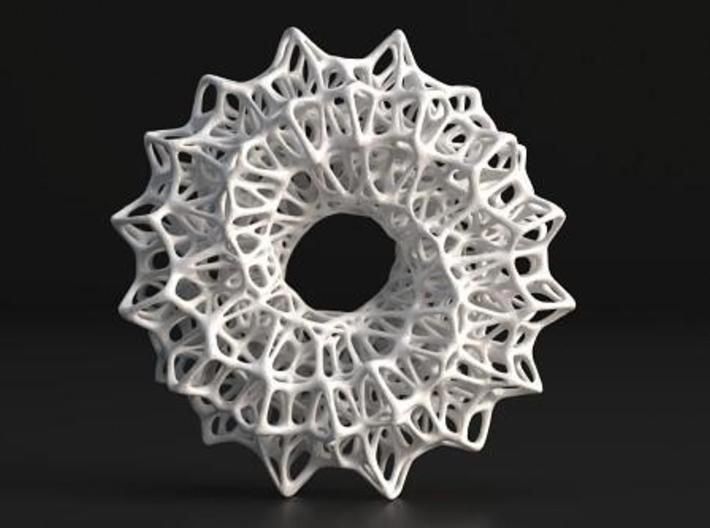 The latest devices and technologies help us shake off the dust from projects that have been put aside. For example, scientists from the American Rice University printed a real “mathematical miracle” on a 3D printer. We are talking about schwarzite, a material that is super strong and very light. Until now, it existed only in the form of a mathematical model on paper.
The latest devices and technologies help us shake off the dust from projects that have been put aside. For example, scientists from the American Rice University printed a real “mathematical miracle” on a 3D printer. We are talking about schwarzite, a material that is super strong and very light. Until now, it existed only in the form of a mathematical model on paper.
Schwarzite got its name from Hermann Schwartz. It was this German mathematician who invented these structures back in the 80s of the XIX century. Then they seemed like a real miracle and inspired inventors to create many materials and structures - both organic and inorganic. However, all this remained the purest theory, which only three-dimensional printers helped to realize.
American specialists, together with Brazilian associates from the University of Campinas, studied the structure of schwarzite using a molecular dynamics model. After that, it was printed in the form of polymer cubes.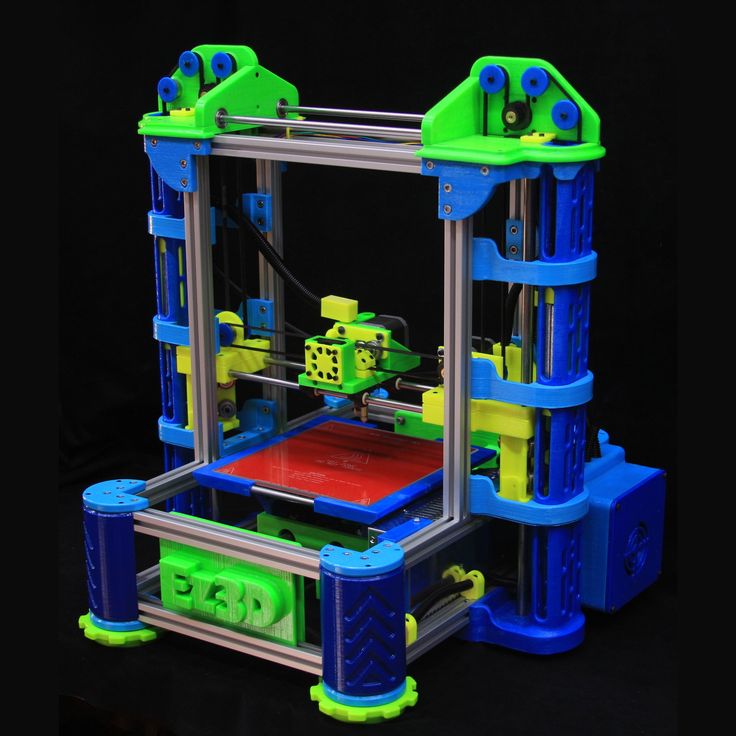 The porous structure of the material was created using computer algorithms. At the same time, scientists realized that they could print it on a 3D printer and then test it. According to researchers, people will soon be able to build large buildings from bricks of this kind. Theoretically, these structures are very strong at the atomic level. They have excellent deformation characteristics.
The porous structure of the material was created using computer algorithms. At the same time, scientists realized that they could print it on a 3D printer and then test it. According to researchers, people will soon be able to build large buildings from bricks of this kind. Theoretically, these structures are very strong at the atomic level. They have excellent deformation characteristics.
According to the team members, it is important how this material breaks. It is necessary that things are destroyed not catastrophically fast, but rather slowly. The difference between these structures is that if a force is applied to one wall made of the material obtained, it will deform slowly, layer by layer. If you make a whole house out of schwarzite, and it ever starts to fall or collapse, then it will do it slowly - so that no one gets hurt.
The researchers plan to improve the surface obtained using a 3D printer with the maximum minimization of the size of polymers, so that the created "building" blocks become even lighter. Also, experts expect to create schwarzites from ceramics and metal.
Source: phys.org
3D printer interesting research construction
JavaScript is disabled in your browser. For correct operation of the site is highly recommended to enable it.
Visualize Mathematics Using 3D Printers
Oliver Neal, Elizabeth Slavkowski
Mathematics Department, Harvard University, Cambridge, Massachusetts, USA [email protected], [email protected]
Visualization40034 In mathematics, visualization has always been an important component of information exchange. Shapes and patterns helped express ideas before formal mathematical language could describe structures. Numbers were written as marks on bones, left by a stone, then carved into stone, inscribed in clay, knots woven into conversation, written on papyrus or paper, then printed on paper or presented on a computer screen.
 While numbers expand language, images allow visualization of concepts, the representation of an object in space retains its significance. Already in ancient Greece, wooden models of Apollo's cones were used to teach the conic section. Early studies in mathematics were often visual: the figures on the Babylonian clay tablets illustrate Pythagorean triples, the Moscow Mathematical Papyrus depicts drawings that helped to derive the volume formula for a truncated cone. Al Khorezmi drew figures to solve a quadratic equation. The visualization is not only explanatory, educational or heuristic, it has a practical meaning: Pythagorean triangles, represented by ropes, helped measure and divide land in Babylonia. A ruler and compass added to the design math on paper can be used to create a mechanism design. Greek mathematicians such as Apollonius, Aristarchus, Euclid or Archimedes mastered the art through the representation of mathematical figures.
While numbers expand language, images allow visualization of concepts, the representation of an object in space retains its significance. Already in ancient Greece, wooden models of Apollo's cones were used to teach the conic section. Early studies in mathematics were often visual: the figures on the Babylonian clay tablets illustrate Pythagorean triples, the Moscow Mathematical Papyrus depicts drawings that helped to derive the volume formula for a truncated cone. Al Khorezmi drew figures to solve a quadratic equation. The visualization is not only explanatory, educational or heuristic, it has a practical meaning: Pythagorean triangles, represented by ropes, helped measure and divide land in Babylonia. A ruler and compass added to the design math on paper can be used to create a mechanism design. Greek mathematicians such as Apollonius, Aristarchus, Euclid or Archimedes mastered the art through the representation of mathematical figures. Although pictures are not a substitute for proof—Kline2 provides compelling visual evidence that all triangles are equilateral—they help convey insights about results and ideas3 4.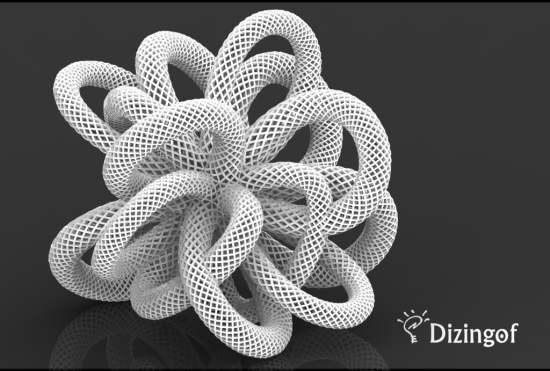 Visualization is especially important in education and can lead to new understanding. Mechanic”)5. As a pedagogical tool, it helps teachers at different levels of mathematics, from primary and secondary school, through higher education to modern research6 7 8. In Slavkovsky’s dissertation9explored the feasibility of the technology in the classroom. We have looked at the work of Archimedes10 using this technology.
Visualization is especially important in education and can lead to new understanding. Mechanic”)5. As a pedagogical tool, it helps teachers at different levels of mathematics, from primary and secondary school, through higher education to modern research6 7 8. In Slavkovsky’s dissertation9explored the feasibility of the technology in the classroom. We have looked at the work of Archimedes10 using this technology.
Visualization helps showcase the beauty of mathematics and reach a larger audience. Shapes can inspire new ideas, create new theorems, or help with calculations; for example, Feynman or Dinkin diagrams or Yang tables. Most mathematicians describe creative ideas and guesses from pictures, even if those shapes don't appear on paper or in a textbook. Artists, architects, filmmakers, engineers and designers draw inspiration from visual mathematics. Well-illustrated books like 11 12 13 14 15 16 are advertisements for mathematics with figures and illustrations. Such publications help counterbalance the impression that mathematics is difficult to convey to non-mathematicians. Mathematical exhibits such as those at the Museum of Science and Technology in Boston or the Museum of Mathematics in New York play an important role in making mathematics accessible. They all visually depict or even practically implement mathematics. While various technologies have emerged that allow displaying spatial and dynamic content on the web, such as Javascript, Java, Flash, WRML, SVG or WebGl, the ability to manipulate an object by hand is still incomparable. 3D printers allow us to create this with relatively little effort.
Mathematical exhibits such as those at the Museum of Science and Technology in Boston or the Museum of Mathematics in New York play an important role in making mathematics accessible. They all visually depict or even practically implement mathematics. While various technologies have emerged that allow displaying spatial and dynamic content on the web, such as Javascript, Java, Flash, WRML, SVG or WebGl, the ability to manipulate an object by hand is still incomparable. 3D printers allow us to create this with relatively little effort.
3D printing
The industry of rapid prototyping and 3D printing in particular emerged about 30 years ago17 18 19 20 21 and is considered by some to be part of an industrial revolution in which manufacturing becomes digital, personal and accessible22 23 24 . First implemented in 1994 with wax printing, the technology has migrated to other materials such as acrylate photopolymers or metals and is now entering the ranks of consumer technologies.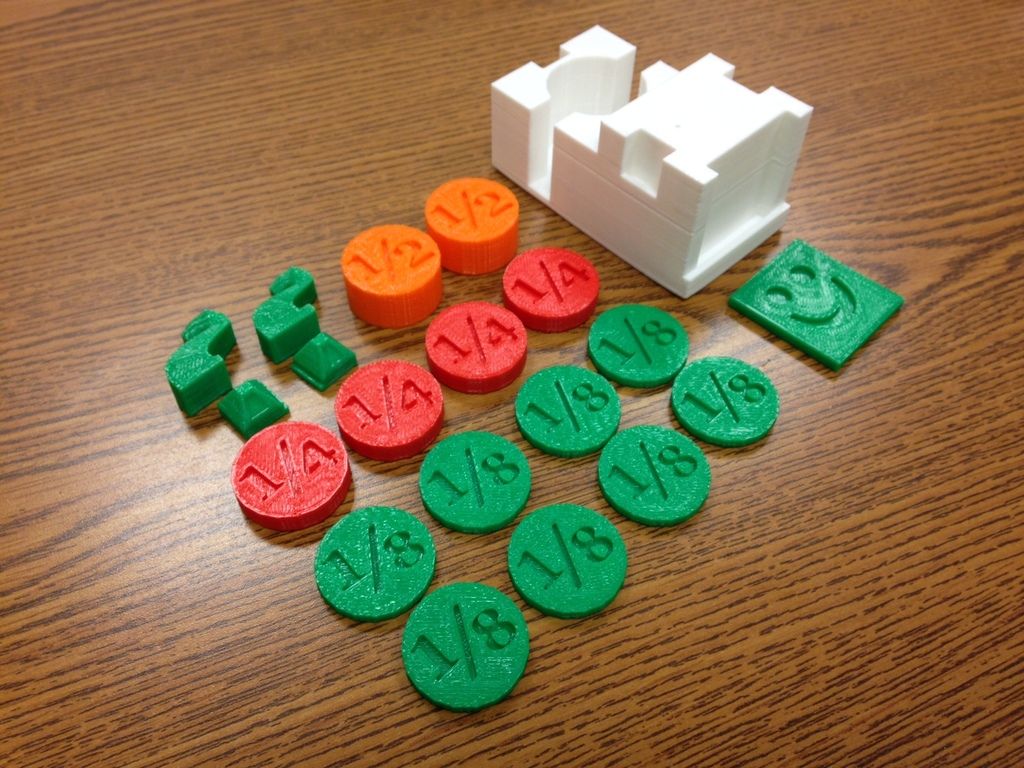
Print centers can print in color, various materials and high quality. The development of 3D printing is the latest link in the chain of imaging techniques. We live in an exciting time because we are experiencing not one but two revolutions at the same time: the information revolution and the industrial revolution. These changes also affect mathematics education25. 3D printing is currently being used in medicine, aircraft, robot prototyping, art and jewelry, to build nano-structures, bicycles, ships, circuits, artwork, robots, weapons, houses, and even used to cake decorations. Its use in education has been investigated in9. Because physical models are important for hands-on active learning. 3D printing technology in education has been used for some time26 and considered for27 sustainable development for K-12 education in STEM28 projects (science, technology, engineering and mathematics - science, technology, engineering, mathematics - ed.), as well as elementary mathematics education29.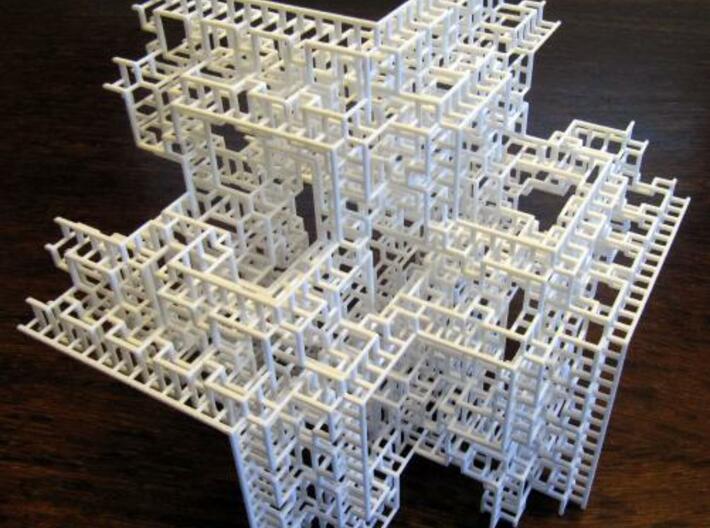 There is no doubt that this will have a huge impact on education30 31 .
There is no doubt that this will have a huge impact on education30 31 .
Printed models allow you to illustrate concepts in various mathematical fields such as computation, geometry or topology. This has already brought new perspectives in mathematics education. Literature about 3D printing is swept away, just like the literature about computers when PCs entered the consumer market. For example, books 32 33 34. As for any emerging technology, its publications can quickly become outdated, but they will remain a valuable testament to the exciting times in which we live.
Bringing math to life
To illustrate visualization using 3D printers, let's focus on mathematical models created with computer algebra systems. in the class, can be reused. Many of the examples given here were designed for classrooms or projects and redrawn so that they can be printed. Unlike "modeling tools," applications that generate a large list of triangles, computer algebra systems describe and display three-dimensional objects mathematically.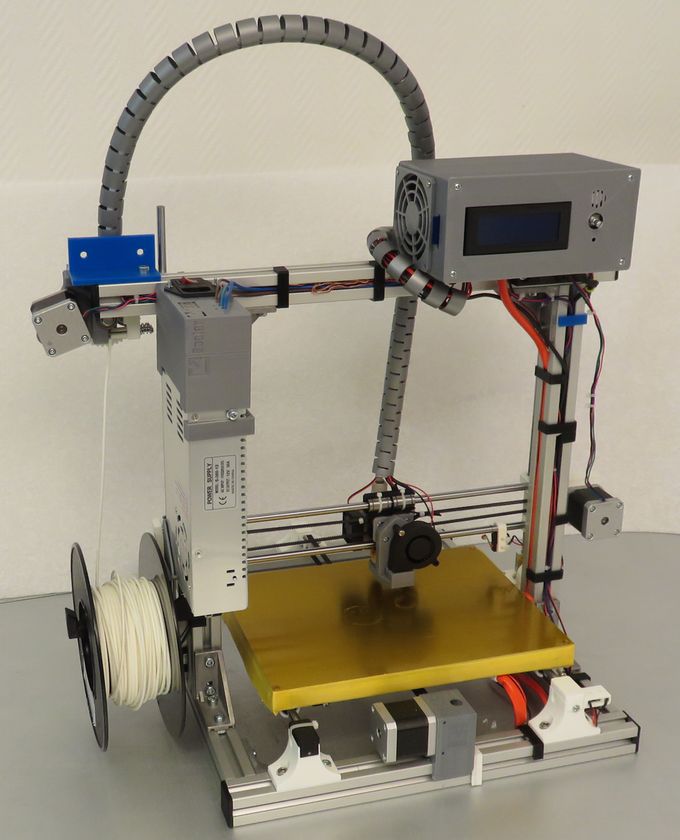 Although we have also experimented with other applications such as Autodesk's 123D Design, Trimble's Sketchup, McNeel Accociates' Free CAD modeling tool, Blender or Rhinoceros, we have mainly worked with computer algebra systems and in particular with Mathematica35 36 37 38 39. To explain with a concrete example, let's consider Newton's "number of touches" theorem for a sphere, which says that the number of touching spheres in three-dimensional space is 12. The theorem says that the maximum number of spheres that can be placed around a given sphere is twelve, if all the spheres have the same radii, touch the central sphere, and do not overlap.
Although we have also experimented with other applications such as Autodesk's 123D Design, Trimble's Sketchup, McNeel Accociates' Free CAD modeling tool, Blender or Rhinoceros, we have mainly worked with computer algebra systems and in particular with Mathematica35 36 37 38 39. To explain with a concrete example, let's consider Newton's "number of touches" theorem for a sphere, which says that the number of touching spheres in three-dimensional space is 12. The theorem says that the maximum number of spheres that can be placed around a given sphere is twelve, if all the spheres have the same radii, touch the central sphere, and do not overlap.
While Newton's contemporary Gregory thought that a thirteenth sphere could be placed, Newton believed that the number of touches was only 12. The theorem was proved only in 1953 year40. To prove this theorem, take an icosahedron with side length 2 and place unit spheres on each of the 12 vertices and they will touch the unit sphere placed in the center. The proof of impossibility to fit 13 spheres41 uses an elementary calculation42 for the area of a spherical triangle, the Euler formula for a polyhedron, the discrete Gauss-Bonnet theorem stating that the sum of the curvature is 2, and a bit of combinatorics to test all variants of the polyhedron that fit the restrictions. Mathematica was used for visualization, we depicted 12 spheres touching the central sphere. Although the object consists of only 13 spheres, the entire array is made up of 8640 triangles. The Mathematica code is very short, since we only need to calculate the coordinates of the icosahedron vertices, generate the object, and export it to an STL file. By displaying the source code on the screen, we showed a visualization, the same as oral proof. If the code is entered into a computer, it will generate a printable STL file.
The proof of impossibility to fit 13 spheres41 uses an elementary calculation42 for the area of a spherical triangle, the Euler formula for a polyhedron, the discrete Gauss-Bonnet theorem stating that the sum of the curvature is 2, and a bit of combinatorics to test all variants of the polyhedron that fit the restrictions. Mathematica was used for visualization, we depicted 12 spheres touching the central sphere. Although the object consists of only 13 spheres, the entire array is made up of 8640 triangles. The Mathematica code is very short, since we only need to calculate the coordinates of the icosahedron vertices, generate the object, and export it to an STL file. By displaying the source code on the screen, we showed a visualization, the same as oral proof. If the code is entered into a computer, it will generate a printable STL file.
Viability analysis
Physical models are important for practical active learning. A repository of 3D models printed for education has emerged26. 3D printing technology has been used for K-12 education in STEM projects28 and elementary math education29. It is hoped that this will have a major impact on education30. The new technology allows everyone to create models for the class. But to make it more accessible, there are still many obstacles. The good news is that STL files can be easily generated because the format is simple and accessible. STL files can be exported to other formats. Mathematica, for example, allows you to import and convert it to other forms. Programs such as "Meshlab" allow you to manipulate it. Finisher programs like "admesh" allow you to work with STL files from the command line. Other standalone programs, "stl2pov", allow you to convert it to a form that can be rendered in a ray tracer such as Povray. One important aspect is that good object creation software is not cheap. Using a commercial computer algebra system such as Mathematica can be very expensive, especially if a volume license is required. There is currently no free computer algebra application that is able to export STL or 3DS or WRL files as built-in modules.
3D printing technology has been used for K-12 education in STEM projects28 and elementary math education29. It is hoped that this will have a major impact on education30. The new technology allows everyone to create models for the class. But to make it more accessible, there are still many obstacles. The good news is that STL files can be easily generated because the format is simple and accessible. STL files can be exported to other formats. Mathematica, for example, allows you to import and convert it to other forms. Programs such as "Meshlab" allow you to manipulate it. Finisher programs like "admesh" allow you to work with STL files from the command line. Other standalone programs, "stl2pov", allow you to convert it to a form that can be rendered in a ray tracer such as Povray. One important aspect is that good object creation software is not cheap. Using a commercial computer algebra system such as Mathematica can be very expensive, especially if a volume license is required. There is currently no free computer algebra application that is able to export STL or 3DS or WRL files as built-in modules.




